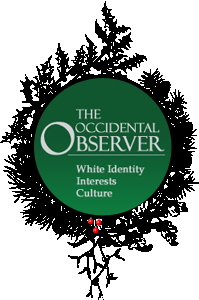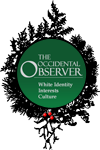Hormonal regulation of ingroup altruism
A recent paper by Carsten K. W. De Dreu and colleagues in Science shows that the hormone oxytocin makes people more inclined to help their ingroup (“The Neuropeptide oxytocin regulates parochial altruism in intergroup conflict among humans”; Science, June 11, 2010; not available online without subscription). The paper is important for several issues related to group conflict. It begins with the simple statement that more than 210 million people were killed by state action in the 20th century, typically because they were seen in ingroup/outgroup terms. It also cites Darwin’s famous statement that “groups with a greater number of courageous, sympathetic and faithful members, who were always ready to warn each other of danger, to aid and defend each other … would spread and be victorious over other tribes” — a classic argument for group selection. They also cite several studies showing that oxytocin is linked to trust: people with high levels of trust have more oxytocin receptors in their brain, and receiving oxytocin makes people more empathic and generous.
The contribution of De Dreu et al. is to show that all this niceness is reserved for the ingroup — what they call “ingroup love.” Oxytocin increased people’s willingness to contribute to a common fund even though they would lose money in the process. However, it didn’t make them more likely to contribute to a fund where the they would benefit their ingroup at the expense of an outgroup. Oxytocin therefore promotes “ingroup love,” not “outgroup hate.” A second experiment showed that this effect occurred even for people who were not personally inclined toward altruism.
The third experiment is particularly important. Here the game was rigged to distinguish the motives of greed (large upside to non-cooperation if the other person cooperates compared to the downside if they do not cooperate) and fear (large downside to cooperation if the other person doesn’t reciprocate compared to the upside if they do reciprocate).
The greed motive is exploitative: it represents the desire to take advantage of a trusting outgroup; the fear motive is defensive: it represents the desire to protect the ingroup against possible exploitation by a non-cooperating outgroup. Oxytocin activated the fear motive: Under the influence of the drug people were more inclined to not cooperate with the outgroup, especially in the fear condition. In other words, they were defending their ingroup. Oxytocin did not affect greed.
So what does this all mean? First, realize that the ingroups and outgroups in the study are not genetically based, say, on ethnic differences. It would be interesting to see if the ingroup defensive effects of oxytocin would be increased if the ingroup and outgroup were racially homogeneous but of different races. We would also expect that there would be less altruistic donating to the ingroup in the first two experiments if the ingroups were ethnically diverse.
But because ethnicity was not manipulated and groups were randomly constructed, it means that the research is relevant to understanding the biological basis of social identity theory. Social identity research shows that even randomly composed ingroups show ingroup biases — what De Dreu et al. term “ingroup love.” The ingroup and outgroup are like two ethnically-based football teams with different colored uniforms rather than two groups that differ on the basis of ethnicity. I have argued on the basis of several pieces of evidence that social identity mechanisms are an evolutionary adaptation for between-group conflict, and these results certainly provide further support for that.
The results don’t really provide any reason for optimism for White advocacy. We already know that whatever psychological mechanisms we have for loving our racial ingroup are failing miserably throughout the Western world. One reason is that Whites do not identify with other Whites as an ingroup, so they don’t show ingroup love specifically toward Whites. In the experiments, it’s quite clear who the ingroup is, but at least for the last several decades few Whites seem to consider their race as an ingroup. Whereas the experimenters made it very clear who the ingroup was, in the real world we are constantly be told by the media that Whites are not a legitimate ingroup. Once again, “it’s the culture, stupid.”
The result is that Whites do not feel empathy for other Whites who have been victimzed — as noted in a previous blog on empathy research (“Whites lack of empathy for other Whites“). Discussions of the consequences of public policy never mention negative effects on Whites, only the negative effects on other groups. For example, the effects of amnesty are discussed only in terms of what’s good for the illegals as an oppressed, deserving group — not on the long term political and cultural viability of Whites. When public policy results might have positive consequences specifically for Whites, there is enormous anxiety among the chattering class. (This happened not long ago when people realized that tweaking the University of California admission standards to help Latinos and Blacks would likely inadvertently help Whites at the expense of Asians. Asian activists were not happy.) Whites have come to see themselves as an illegitimate ingroup.
The problem with social identity mechanisms is that because ethnicity is not relevant to defining ingroups and outgroups, these mechanisms are manipulable by the wider culture, and that is exactly what we are seeing.
The result is that the most empathic and altruistic among us fail to defend their racial ingroup. I suspect that most Whites with naturally high levels of oxytocin are expending their empathy and altruism on people quite a bit unlike themselves — adopting African babies and other such altruistic acts. And besides the gratification they get from helping others, they also get a great deal of social approval as an added bonus.








Comments are closed.